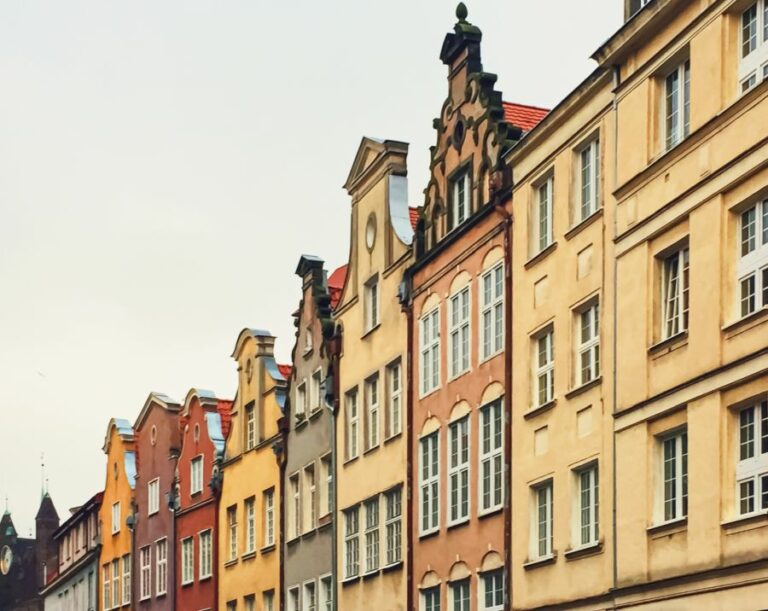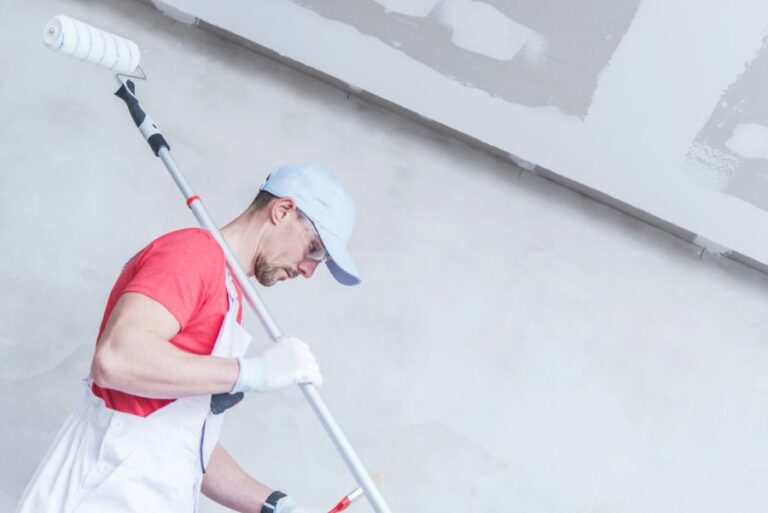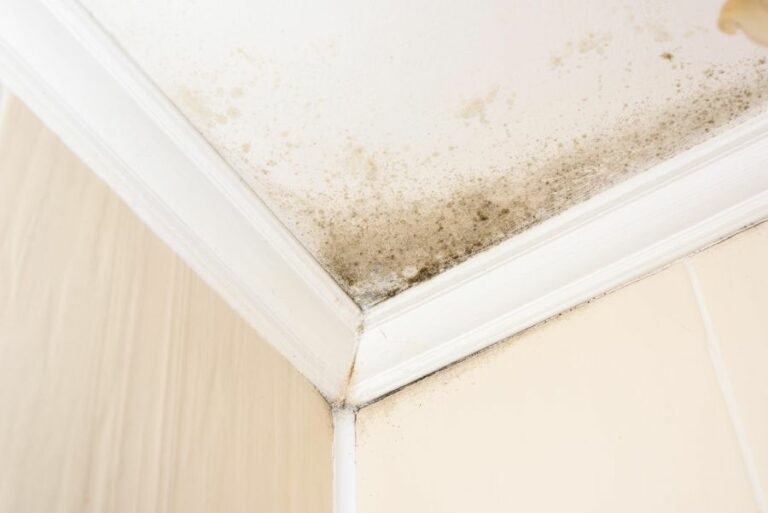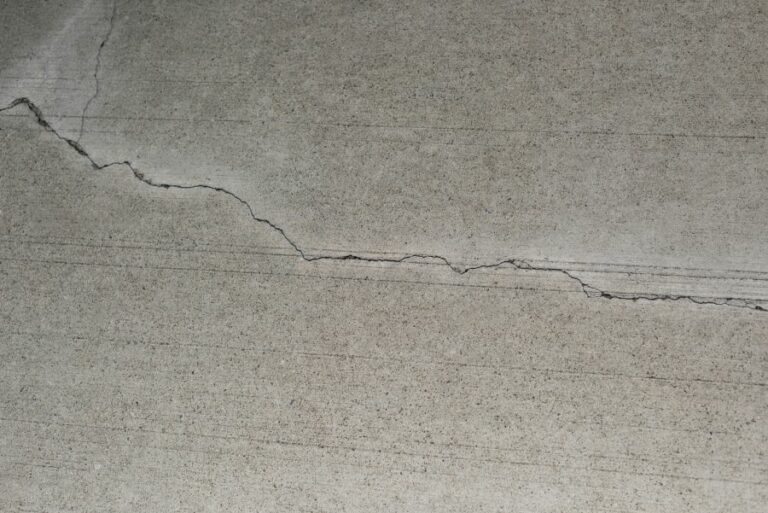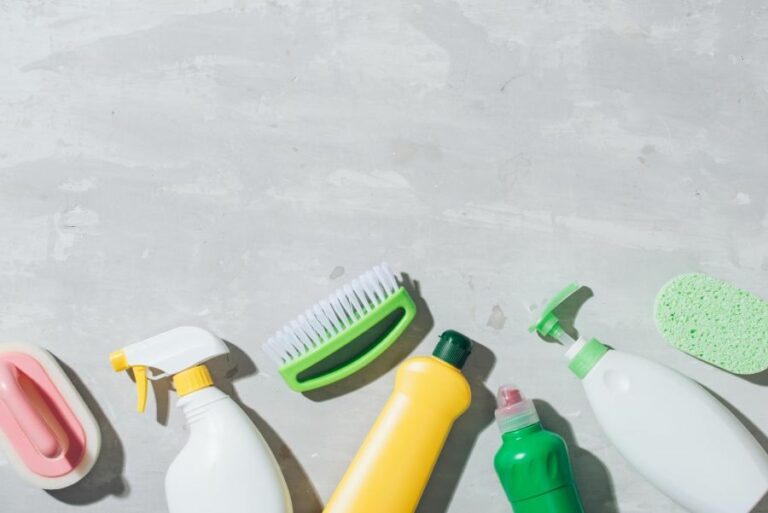Eliminating Rust And Loose Paint From Surfaces. What Pros Say
Eliminating rust and loose paint from surfaces can feel like a daunting task, but fear not, as we have the perfect solutions to make your surfaces look as good as new. With the right approach and tools, you can easily remove these unsightly blemishes and restore your surfaces to their original state. So, let’s dive into the most effective methods for tackling rust and loose paint, giving you that pristine and polished finish you desire.
Eliminating rust and loose paint from surfaces:
To effectively remove rust and loose paint from surfaces, one can use mechanical methods such as sanding, wire brushing, and sandblasting or chemical methods like rust converters and rust removers. For paint removal, scraping, heat guns or chemical paint strippers may be used. Proper surface preparation and preventive measures, such as using a primer or rust inhibitor and maintaining a dry environment, are crucial to prolonging the surface lifespan.

Discover the secret to eliminating rust and loose paint, giving surfaces new life! Our comprehensive guide offers step-by-step instructions, expert tips, and product recommendations. Read on to learn how to restore beauty and longevity to any surface you won’t be disappointed.
Contents
- 1 Effective removal of rust and chipped paint from surfaces
- 2 Methods for Rust and Paint Elimination
- 3 Vinegar for rust and paint removal: Does it work?
- 4 Removing rust and paint from metallic surfaces
- 5 Preventing rust from appearing through painted surfaces
- 6 Preparing the Surface for Painting
Effective removal of rust and chipped paint from surfaces
Rust and loose paint can significantly diminish the durability and appearance of various surfaces.
• Causes of Rust and Loose Paint
Before diving into the removal process, it’s essential to understand the common causes of rust and paint failure. This will help you take preventive measures and ensure the long-term durability of your treated surface.
- Moisture: When metal surfaces are exposed to moisture or humid environments, a chemical reaction occurs that leads to rust formation. Paint can also weaken and become loose when exposed to moisture.
- Low-quality paint and metal: Using inferior-quality paint and metal can result in faster corrosion and paint failure.
- Improper surface preparation: Insufficient surface preparation before painting can lead to loose or peeling paint.
- Extreme weather conditions: Exposure to harsh weather conditions, such as intense sunlight, heavy rain, or drastic temperature fluctuations, can contribute to rust formation and paint deterioration.
• Rust Removal Techniques
– Mechanical Methods
Sanding
For small areas affected by rust, using sandpaper can be effective in removing rust. Start with coarse-grit sandpaper (around 80-grit) and progress to finer grits (up to 220-grit) to achieve a smooth finish. Always sand in a circular motion to prevent streaks or scratches.
Wire Brushing
For larger rusted areas, using a wire brush can be more efficient in removing surface rust. A wire brush can effectively remove loose rust and paint, making it easier to treat the surface.
Many prefer using a wire brush attachment for a power drill or angle grinder for faster results, but be sure to wear appropriate safety gear such as gloves, goggles, and a mask.
Sandblasting
For heavily rusted surfaces or large-scale projects, sandblasting can be the most effective method. This process involves using compressed air to blast abrasive material (such as sand or steel grit) at the rusted surface, removing rust and paint quickly.
Due to its aggressive nature, professional handling or experience is recommended.
– Chemical Methods
Rust Converters
Rust converters are chemical solutions that react with rust to form a stable, black layer of protective coating. This is useful in cases where complete rust removal is not feasible or practical. Apply rust converter according to the manufacturer’s instructions.
Rust Removers
These chemical solutions are designed to dissolve rust upon contact. They are typically applied to the rusted surface using a brush, sponge, or spray. Always follow the manufacturer’s instructions for application and safety precautions.
• Removing Loose Paint
– Scraping
For loose paint on surfaces, using a paint scraper or putty knife can be an effective method. Gently angle the scraper and apply minimal pressure to avoid damaging the surface underneath. Be sure to wear safety glasses and gloves when scraping paint.
– Heat Gun
A heat gun can be used to soften the paint, making it easier to scrape off. Be sure to maintain caution as heat guns can reach extremely high temperatures, posing a risk of fire or burns.
Hold the heat gun about 2 inches away from the surface and move it slowly, applying even heat across the surface. Use a paint scraper to peel off the softened paint.
– Chemical Paint Strippers
For stubborn paint or intricate surfaces, using a chemical paint stripper may be necessary. Apply the paint stripper according to the manufacturer’s instructions, and allow it to break down the paint before scraping it off.
• Surface Preparation and Protection
Once rust and loose paint have been removed, it is essential to clean the surface thoroughly and apply a primer or rust inhibitor before repainting. This will help prevent future rust formation and ensure the paint adheres properly to the surface.
It’s also essential to maintain a dry environment for your surfaces to reduce the risk of rust formation. Implementing moisture-control measures, such as proper ventilation or using a dehumidifier, can help prolong the lifespan of your surfaces.
Regular maintenance, inspections, and timely repairs will also help keep rust and paint failure at bay.
• Conclusion
Eliminating rust and loose paint from surfaces not only enhances their appearance but also prolongs their lifespan. Understanding the removal techniques and taking preventive measures will save you time and money in the long run.
You can find more information on rust and corrosion from reliable sources such as the National Association of Corrosion Engineers or the American Galvanizers Association.
Methods for Rust and Paint Elimination
• Chemical Rust Removers
One effective method to remove rust is by using chemical rust removers. These products contain powerful acids or other active agents that break down rust, making them easier to remove from surfaces. It is essential to follow the instructions on the product label for safe and effective results.
There are several types of chemical rust removers available, including:
- Phosphoric Acid-based: These rust removers, such as Naval Jelly and Ospho, are excellent for removing rust from metals. Phosphoric acid converts rust into a black, inert substance that can be easily removed using a brush or scraper. Be aware that phosphoric acid can be harsh on some surfaces, so test on a small, inconspicuous area first.
- Oxalic Acid-based: Oxalic acid is another powerful rust remover used for removing rust from various surfaces, particularly wood. Products such as Bar Keepers Friend and wood bleach contain oxalic acid, which helps remove rust stains from wood and other porous surfaces.
When using chemical rust removers, always make sure to wear proper protective gear, such as gloves and goggles, and work in a well-ventilated area. Additionally, it is essential to neutralize any remaining acids or chemicals after the rust has been removed.
– Recommended Products
I recommend using Evapo-Rust for removing rust from metal surfaces. Evapo-Rust is a non-toxic, biodegradable rust remover that effectively removes rust without harming the surface or requiring abrasive scrubbing.
• Mechanical Rust Removal Methods
Mechanical methods involve physically removing the rust or paint from the surface. These methods can be time-consuming and labor-intensive but can also be useful in situations where chemicals cannot be used.
Some mechanical rust removal methods include:
- Sanding: Sandpaper or abrasive pads can be used to remove rust or paint from the surface. Sanding can be done either manually or with the help of power tools like orbital sanders.
- Wire Brushing: A wire brush can effectively remove rust and paint from metal surfaces.
- Scraping: A scraper can be used for removing thicker rust or paint, though this method may cause damage to the surface if not used cautiously.
– Recommended Products
For mechanical rust removal, I recommend using 3M abrasive pads or sandpaper, as they offer reliable and durable products that effectively remove rust and paint from various surfaces.
• Paint Strippers
Similar to rust removers, paint strippers contain chemicals that break down paint layers, making them easier to remove. There are two main types of paint strippers, solvent-based and bio-based.
- Solvent-based paint strippers: These products contain powerful chemicals such as methylene chloride, N-methylpyrrolidone (NMP), or toluene. They are effective at removing paint quickly but are hazardous and require proper safety precautions, such as wearing gloves, goggles, and adequate ventilation.
- Bio-based paint strippers: These products are made from natural ingredients and are considered safer for the environment and the user. However, they may take longer to remove paint compared to solvent-based strippers.
– Recommended Products
For paint stripping, I recommend using Soy Gel Professional Paint Remover. This product is a bio-based paint stripper that effectively removes paint without harsh fumes or chemicals.
• Media Blasting
Media blasting is a powerful rust and paint removal method that involves blasting the surface with an abrasive material. This process is useful when dealing with large surfaces or heavily corroded areas. Common media types include:
- Sandblasting: This method involves using high-pressure air to blast sand particles against rusted surfaces. It is essential to use appropriate safety gear and consider the environmental impact of sandblasting, as it can cause silica dust pollution.
- Soda blasting: Soda blasting uses baking soda as the abrasive media. This method is considered more eco-friendly and less aggressive than sandblasting, making it suitable for delicate surfaces.
- Dry ice blasting: This method involves blasting dry ice particles against the rusted area. It is an effective and environmentally friendly method with no chemical residues.
– Recommended Products
For media blasting, I recommend using a Clarke sandblaster or soda blaster. These products are reliable and easy to operate, making them suitable for DIY rust and paint removal projects.
• Electrolysis
Electrolysis is a powerful, non-toxic method for removing rust from metal objects. This process involves using an electric current to break down rusty surfaces into a soluble form. To learn more about the electrolysis process and how to perform it safely, visit this Penn State page.
In conclusion, there are various methods for removing rust and paint from surfaces. Choosing the appropriate method will depend on the type of surface, the degree of rust or paint, and safety considerations.
I recommend trying different techniques to find the one that works best for your specific rust or paint removal needs.
Vinegar for rust and paint removal: Does it work?
Vinegar, known as acetic acid, is widely used for its cleaning and deodorizing properties. It can also be used as an effective DIY solution for removing rust and paint from various surfaces.
• How Vinegar Removes Rust
Rust occurs when iron or steel surfaces come into contact with moisture and oxygen, leading to the formation of iron oxide. This reddish-brown substance can be detrimental to the structural integrity and aesthetics of various items.
Vinegar contains acetic acid, a mild organic acid that can dissolve rust due to its acidic nature. When applied to a rusted surface, the vinegar reacts with the iron oxide, dissolving the rust and allowing for its easy removal.
– Vinegar Types for Rust Removal
While any type of vinegar can be used for rust removal, white vinegar is often preferred due to its colorless nature and higher acetic acid concentration. However, apple cider vinegar and other types can still be effective in removing rust.
• How Vinegar Removes Paint
Vinegar can also be utilized in the removal of paint from various surfaces. Its acidic nature helps break down the bond between the paint and the surface, making it easier to remove.
Although vinegar is not as strong as commercial paint strippers, it is an eco-friendly and affordable option for small-scale paint removal tasks.
– Vinegar Types for Paint Removal
Similar to rust removal, white vinegar is the most commonly used type for paint stripping. However, other varieties, such as apple cider vinegar, can also be used effectively.
• Application Tips for Using Vinegar to Remove Rust and Paint
When using vinegar to remove rust and paint, the application process is relatively similar. Below are some practical steps to follow for optimal results:
- Cleaning and Preparation: Begin by cleaning the rusted or painted surface with soap and water to remove any dirt, debris, or grease. Dry the area thoroughly before continuing to the next step.
- Vinegar Application: Soak a cloth, sponge, or steel wool with vinegar and apply it to the affected surface. For smaller items, you can also submerge them in a container filled with vinegar. Allow the vinegar to sit on the surface for at least 30 minutes or up to several hours, depending on the severity of the rust or the thickness of the paint.
- Removing Rust or Paint: After the vinegar has had time to react with the rust or paint, use a scrub brush, steel wool, or plastic scraper to remove the loosened material. Rinse the area thoroughly with water and repeat this step if necessary.
- Neutralizing the Acid: Once the rust or paint has been removed, it’s essential to neutralize the acid in the vinegar. For rust removal, you can use a solution of baking soda and water to scrub the surface. For paint removal, simply washing the surface in soapy water will suffice.
- Drying and Protection: Dry the surface thoroughly and apply a protective sealant or coat of paint to prevent future rust and paint issues.
• Safety Precautions
Although vinegar is a mild acid, it is wise to take some safety precautions when using it for rust and paint removal:
- Wear gloves to protect your hands from any possible irritations.
- Use protective eyewear to prevent splashes from getting in your eyes.
- Work in a well-ventilated area to minimize the risk of respiratory irritation.
- Wash your hands thoroughly after handling vinegar.
• The Verdict: Vinegar as a Rust and Paint Remover
In conclusion, vinegar’s acidic nature makes it an effective solution for removing rust and paint from various surfaces. While it may not be as potent as commercial products, it offers a safe, eco-friendly, and affordable alternative for small-scale removal tasks.
For more information on the science behind rust formation and removal, visit the American Chemical Society website.Remember to practice safety precautions while handling vinegar and enjoy the benefits of this versatile household item.
Removing rust and paint from metallic surfaces
Restoring metal surfaces to their original condition by removing rust and paint is a task that many people overlook. However, it is essential to ensure the longevity and aesthetic appeal of metal objects.
• Necessary Tools and Precautions
Before diving into the methods of removing rust and paint from metal, it is crucial to gather essential tools and follow specific safety precautions. The necessary tools include:
- Protective gloves
- Safety goggles
- Dust mask or respirator
- Wire brush or steel wool
- Sandpaper of various grits
- Paint scraper or putty knife
- Electric drill with wire brush attachment (optional)
Wearing appropriate protective gear while working is crucial to avoid injuries and inhaling harmful dust particles. Additionally, always work in a well-ventilated area to minimize exposure to fumes and dust.
• Chemical Rust Removers
One of the most effective methods for removing rust and paint from metal surfaces is using chemical rust removers. Various products are available in the market, including liquid and gel-based rust removers, which contain phosphoric, oxalic, or hydrochloric acid.
To use a chemical rust remover, follow these steps:
- Clean the surface: Thoroughly clean the metal surface with soapy water to remove any dirt and debris.
- Apply the rust remover: Follow the manufacturer’s instructions and apply the rust remover on the rusty surface using a brush or spray bottle.
- Wait: Allow the rust remover to work. This may take several minutes to a few hours, depending on the product and the severity of the rust.
- Scrub the surface: Use a wire brush, steel wool, or an electric drill with a wire brush attachment to scrub away the loosened rust.
- Rinse and dry: Thoroughly rinse the metal with clean water to remove any residual rust remover and dry the surface immediately.
• Mechanical Removal Methods
Mechanical removal methods, such as sanding and grinding, are effective ways to remove rust and paint from metal surfaces, especially for larger or heavily rusted objects.
– Sanding
Sanding involves using abrasive materials, such as sandpaper or abrasive pads, to wear away the rust and paint from the metal surface.
Start by using coarse-grit sandpaper (e.g., 60-80 grit) to remove the bulk of the rust and paint, then move to medium (e.g., 120-150 grit) and fine-grit (e.g., 180-220 grit) sandpaper to achieve a smooth finish.
– Grinding
Grinding entails using electric-powered tools, such as an angle grinder or electric drill with grinding attachments, to remove rust and paint from metal surfaces.
While efficient, note that grinding may generate significant heat, so be cautious not to overheat the metal and inadvertently cause physical damage.
• Alternative Methods
Several alternative methods can effectively remove rust and paint from metal surfaces without using chemicals or mechanical methods.
– Electrolysis
Electrolysis is an effective and environmentally friendly method for removing rust from metal objects. This process involves immersing the rusty item in an electrolyte solution and applying an electric current, causing the rust to be lifted from the metal surface.
A detailed explanation of the electrolysis process can be found on this site from the Nautical Archaeology Program at Texas A&M University.
– Heat Treatment
Heat treatment is a practical method for removing paint from metal surfaces. By applying heat to painted metal using a heat gun, propane torch, or infrared paint remover, the paint will soften and can be easily scraped away.
However, exercise caution when using heat treatments, as excessive heat may damage the metal or cause injury.
Additionally, some paints, especially older ones, may contain lead, so it is critical to use proper safety equipment, dispose of the removed paint according to local regulations, and work in a well-ventilated area.
• Final Steps
After successfully removing rust and paint from the metal surface, it is essential to take the following final steps:
- Clean the surface: Wipe the metal surface with a clean cloth or sponge to remove any remaining debris.
- Apply a rust inhibitor: To protect the metal from future rust formation, apply a rust inhibitor or primer, which is available in spray or brush-on varieties.
- Paint or seal the metal: To further protect the metal and enhance its appearance, apply a suitable metal paint or clear sealant.
By following the methods and recommendations in this article, you can successfully remove rust and paint from metal surfaces and restore their original condition, ensuring their longevity and visual appeal.
Step | Description |
|---|---|
1 | Wear safety equipment such as gloves, goggles, and a mask to protect yourself from dust and debris. |
2 | Use a wire brush or a scraper to remove loose paint and rust. |
3 | Apply a chemical paint stripper or rust remover to the affected area. Follow the manufacturer’s instructions for application and wait time. |
4 | Use a plastic scraper or a soft cloth to remove the loosened paint and rust. Be gentle to avoid damaging the metal surface. |
5 | Repeat steps 3 and 4 if necessary to remove all paint and rust. |
6 | Once the paint and rust are removed, clean the metal surface with a damp cloth to remove any residue. |
7 | Allow the metal surface to dry completely before applying any paint or protective coating. |
Preventing rust from appearing through painted surfaces
Rust can be a detrimental issue for structures and objects made of metal, as it causes deterioration that can lead to structural failures or unsightly appearances. As a professional with experience dealing with rust, I can assure you that it is possible to prevent rust from coming through the paint.
• Understanding Rust Formation
Before diving into the prevention strategies, it is essential to understand how rust forms. Rust is caused by the oxidation of iron in metal surfaces when exposed to moisture and oxygen. This oxidation process produces a flaky, reddish-brown layer on the metal surface, referred to as rust.
When left unchecked, rust will continue to grow and corrode the metal.
– Importance of Surface Preparation
To prevent rust from penetrating through the paint, proper surface preparation is crucial. This involves removing any existing rust, mill scale, grease, dirt, or other contaminants from the surface.
Inadequate surface preparation can significantly affect the performance of the paint or coating system, leading to premature failure, adhesion problems, or rust breakthrough.
Cleaning the Metal Surface
It is crucial to clean the metal surface to ensure proper adhesion and rust-prevention properties. It is recommended to use a degreaser or mild detergent solution to remove oil, grease, or other contaminants that can impede the paint’s performance.
If there is any existing rust, it should be removed using a wire brush or abrasive pad.
Abrasive Blasting
For heavily rusted surfaces or large-scale projects, abrasive blasting is an effective method for removing rust and creating a clean surface. This process involves using high-pressure air mixed with an abrasive material (such as sand, steel grit, or crushed glass) to clean the metal surface.
Preparing the Surface for Painting
Once the metal surface is clean and free from rust, it is essential to create a suitable profile for the paint to adhere to. This can be achieved through methods such as sanding or acid etching.
A phosphate conversion coating can also be applied, which helps increase the paint’s adhesion and provides additional protection against rust.
• Selecting the Appropriate Paint
Choosing the right paint is another significant factor in preventing rust from coming through. There are various types of paint that offer varying levels of rust resistance, depending on their composition and formulation.
– Rust-Inhibitive Primers
A rust-inhibitive primer is designed to prevent rust formation by creating a barrier between the metal surface and external elements.
These primers typically contain anticorrosive pigments, such as zinc or red iron oxide, that provide rust-inhibiting properties. It is recommended to apply two coats of primer to maximize protection.
Epoxy and Polyurethane Coatings
Epoxy and polyurethane coatings are known for their excellent adhesion, durability, and corrosion protection properties. These coatings create a tough, impermeable barrier that can significantly prolong the metal’s life and resist rust penetration.
While epoxy coatings can be used as standalone systems, they are often used in conjunction with polyurethane topcoats for added performance and aesthetics.
Alkyd-Based Paints
Alkyd-based paints are another option for protecting metal surfaces from rust. These paints are formulated with a synthetic resin that provides a hard, durable finish. However, alkyd-based paints typically require the use of a rust-inhibitive primer to prevent rust formation.
• Proper Application Techniques
Even with the appropriate paint selection and surface preparation, the paint’s application method plays a vital role in preventing rust from coming through.
– Film Thickness
To ensure maximum rust protection, it is essential to apply the paint at the appropriate film thickness. Applying paint too thin can result in inadequate coverage and a porous film, allowing moisture to penetrate and cause rust.
On the other hand, applying too thick of a coating can lead to cracking and reduced service life.
Spray Application
Spray application through airless or conventional spray systems is the most efficient method for applying paint to a metal surface. This technique ensures a consistent and uniform film thickness, which is crucial for preventing rust penetration.
Brush and Roller Application
If spray application is not feasible, brush and roller application methods can also be used. However, it is important to choose the right type of brush or roller and to use proper techniques to ensure even coverage and avoid excessive build-up or sags.
• Regular Maintenance and Inspection
Lastly, to prevent rust from coming through the paint, regular maintenance and inspection of the painted surface are necessary. This can involve touch-ups of damaged or worn areas, periodic cleaning, or complete recoating when needed.
By staying vigilant and addressing potential issues early on, rust breakthrough can be prevented.
In conclusion, it is entirely possible to prevent rust from coming through the paint by following proper surface preparation procedures, selecting the appropriate paint products, using correct application techniques, and maintaining the painted surface.
By adhering to these guidelines, you can protect your valuable metal assets and ensure their longevity.
Methods | Description |
|---|---|
Remove existing rust | Before painting, remove any existing rust using a wire brush, sandpaper, or a rust remover solution. |
Apply rust converter | A rust converter can be applied to remaining rust to convert it into a more stable and paintable surface and provide a barrier against future rust formation. |
Use primer | Applying a rust-inhibiting primer before painting can help create an additional barrier against rust. |
Choose the right paint | Use high-quality paint that is specifically designed to resist rust. |
Monitor and maintain | Regularly inspect the painted area for signs of rust and repair any damage as needed. |

